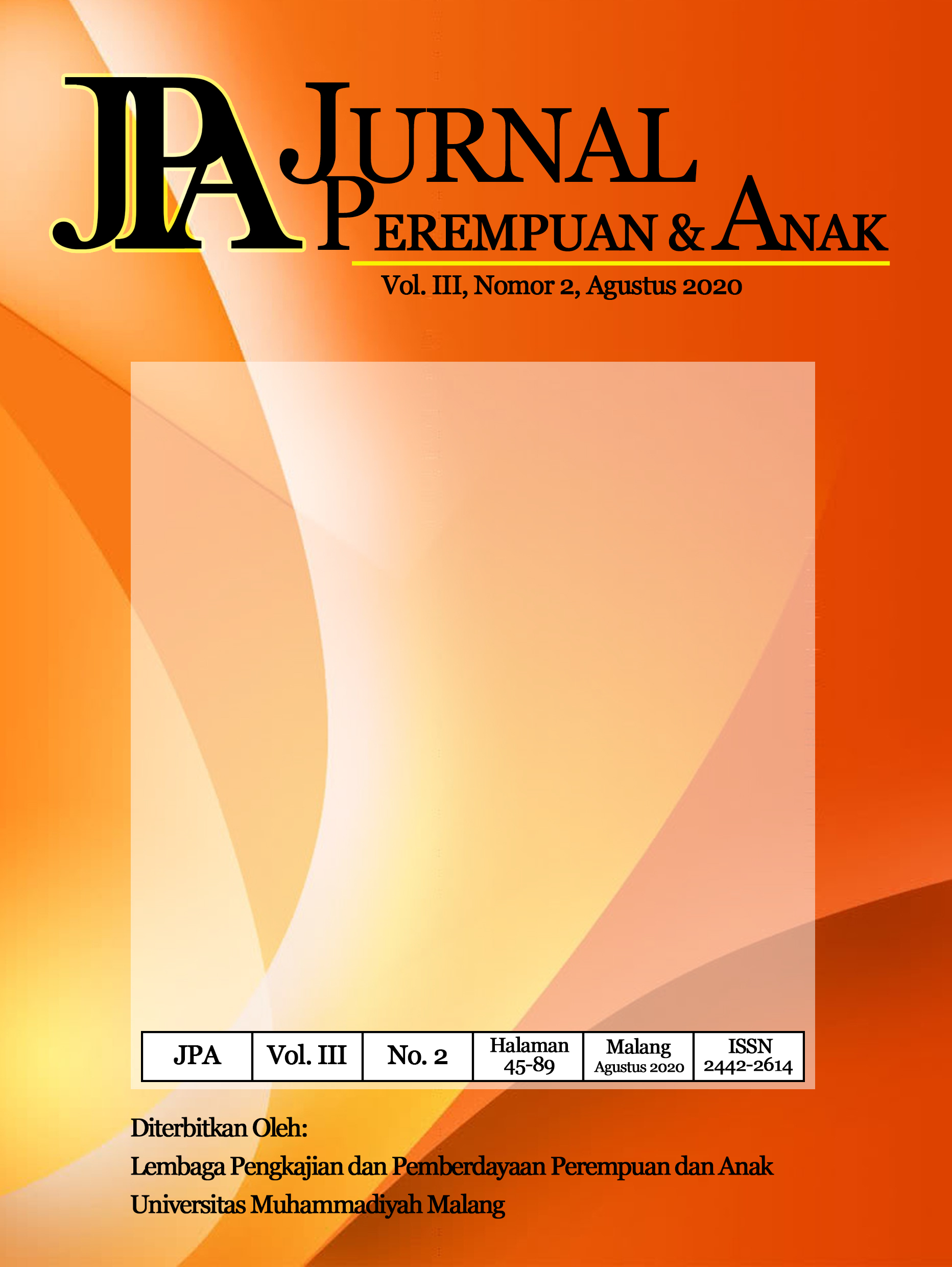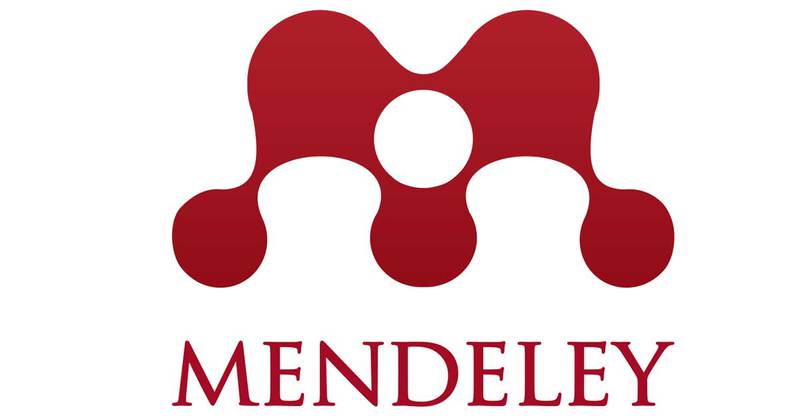Social Interaction Patterns in Broken Home Family Members (A Study on the Interaction of Children as Divorce Victims with Family Members in the Ronggomulyo Family of Tuban Regency)
DOI:
https://doi.org/10.22219/jpa.v3i2.16151Keywords:
Broken Home, Devorce Victime s, IntractionAbstract
Broken home is a condition where a family experienced a split caused by conflicts or disputes, disagreements between married couples. From the inability of married couples in maintaining the family, most couples eventually decided to have a divorce. This condition results the children to be the victims of parental divorce. It results in depression state of the child even to the frustration that is difficult to control and regulated. This study aims to find out, and describe 1) The child interaction pattern of the divorce victims with family members in Ronggomulyo Village Tuban Regency. The method used in this research is a descriptive qualitative research method. The data were obtained from observation, interview, and documentation. The research subjects have been selected based on certain criteria using purposive sampling technique. This study uses Symbolic Interactionism theory by George Herbert Mead. The results of this study are 1) The subject understanding of divorce is painful 2) The subject understanding of parent after divorce is parent experience a change in attitude 3) The subject’s actions after the divorce is changes in behavior 4) The subject’s interaction with the family members after the divorce in this research is dissociative and associative.
Downloads
References
Anwar, Yesmil. (2013). Sosiologi Untuk Universitas. Bandung: Refika Aditama.
Badan Pusat Statistik. (2016). Pembangunan Ketahan Keluarga. Dipetik Maret 4, 2018, dari https://www.kemenpppa.go.id/lib/uploads/list/9455b-buku-pembangunan-ketahanan-keluarga-2016.pdf
Fio. (2012, Oktober 7). Perceraian (Definisi, Penyebab, Dampak, dan Cara Mengatasi). Dipetik Maret 5, 2018, dari http://fyoonamyart.blogspot.co.id/2012/10/perceraian-definisi-faktor-penyebab.html
Ismah, Siamatul. (2016). Komunikasi Antar Pribadi Pada Keluarga Broken Home (Studi Kasus Perumahan Graha Walantaka) : Skripsi. Banten: Jurusan Ilmu Komunikasi Fakultas Ilmu Sosial Universitas Sultan Ageng Tirtayasa Serang.
K Dwi Susilo, Rachmad. (2008). 20 Tokoh Sosiologi Modern. Jogjakarta: AR-RUZZ MEDIA.
Memorandum. (2018, Maret 6). Perceraian di Tuban di Dominasi Perselingkuhan. Dipetik Maret 4, 2018, dari Jawa Pos Group: http://www.memorandum.id/daerah/tuban/22401-perceraian-di-tuban-didominasi-perselingkuhan
Pengadilan Agama Kabupaten Tuban. (2018). Direktori Putusan Peradilan Agama. Dipetik Maret 1, 2018, dari https://putusan.mahkamahagung.go.id/pengadilan/pa-tuban/periode/register
Poloma, Margaret M. (2010). Sosiologi Kontemporer. Jakarta: PT. Rajagrafindo Persada.
Ritzer, George. (2016). Teori Sosiologi Dari Teori Sosiologi Klasik Sampai Perkembangan Mutakhir Teori Sosial Postmodern . Bantul: Kreasi Wacana.
Rohmat. (2010). Keluarga dan Pola Pengasuhan Anak. Jurnal Studi Gender dan Anak Vol. 5 No. 1 Jan-Juni , 36-37.
Soekanto, Soerjono. (2013). Sosisologi Suatu Pengantar. Jakarta: Raja Grafindo Persada.
Sugiyono. (2014). Metode Penelitian Kuantitatif Kualitatif dan R&D. Bandung: CV Alfabeta.
Sujoko. (2011). Hubungan Antara Keluarga Broken Home, Pola Asuh Orang Tua dan Interaksi Teman Sebaya Dengan Kenakalan Remaja : Laporan Penelitian. Surakarta: Universitas Setia Budi.
Sulistyowati, Tutik. (2005). Sosiologi Keluarga. Malang.
Taneko, Soleman B. (1984). Struktur dan Proses Sosial Suatu Pengantar Sosiologi Pembangunan. Jakarta: Rajawali.
Wardhani, Oetari W. (2016). Problematika Interaksi Anak Keluarga Broken Home Di Desa Banyuroto, Nanggulan, Kulon Progo, Yogyakarta. Jurnal Elektronik Mahasiswa Pendidikan Luar Biasa Vol. 5 No. 2 Februari , 3.
Wijaya, Louis Nugraheni. (2012). Pola Pengasuhan Remaja Dalam keluarga Broken Home Akibat Perceraian. Surakarta: Jurusan Sosiologi Fakultas Ilmu Sosial dan Ilmu Politik Universitas Negeri Sebelas Maret.
Downloads
Published
How to Cite
Issue
Section
License
Copyright (c) 2020 Tutik Sulistyowati, Luluk Dwi Kumalasari, Indah Wati Afryliani

This work is licensed under a Creative Commons Attribution-ShareAlike 4.0 International License.
Authors who publish with Jurnal Perempuan dan Anak (JPA) agree to the following terms:
- For all articles published in Jurnal Perempuan dan Anak (JPA), copyright is retained by the authors. Authors give permission to the publisher to announce the work with conditions. When the manuscript is accepted for publication, the authors agree to automatic transfer of the publishing right to the publisher.
- Authors retain copyright and grant the journal right of first publication with the work simultaneously licensed under a Creative Commons Attribution-ShareAlike 4.0 International License that allows others to share the work with an acknowledgment of the work's authorship and initial publication in this journal.
- Authors are able to enter into separate, additional contractual arrangements for the non-exclusive distribution of the journal's published version of the work (e.g., post it to an institutional repository or publish it in a book), with an acknowledgment of its initial publication in this journal.
- Authors are permitted and encouraged to post their work online (e.g., in institutional repositories or on their website) prior to and during the submission process, as it can lead to productive exchanges, as well as earlier and greater citation of published wor (See The Effect of Open Access).
This work is licensed under a Creative Commons Attribution-ShareAlike 4.0 International License








